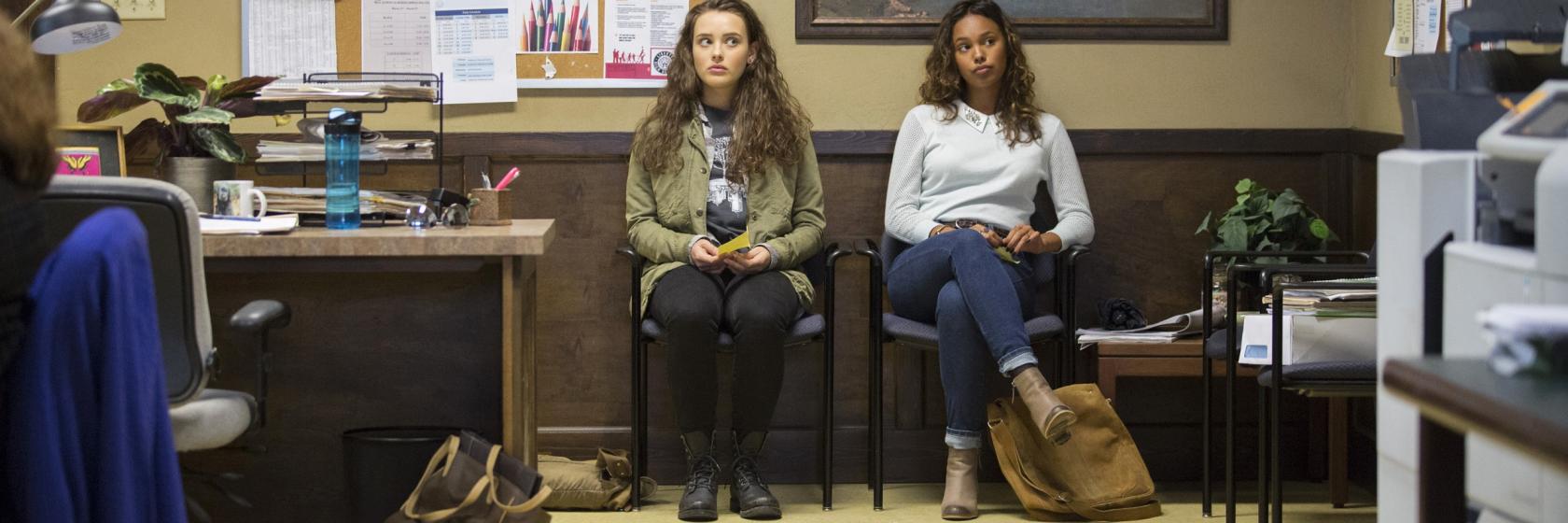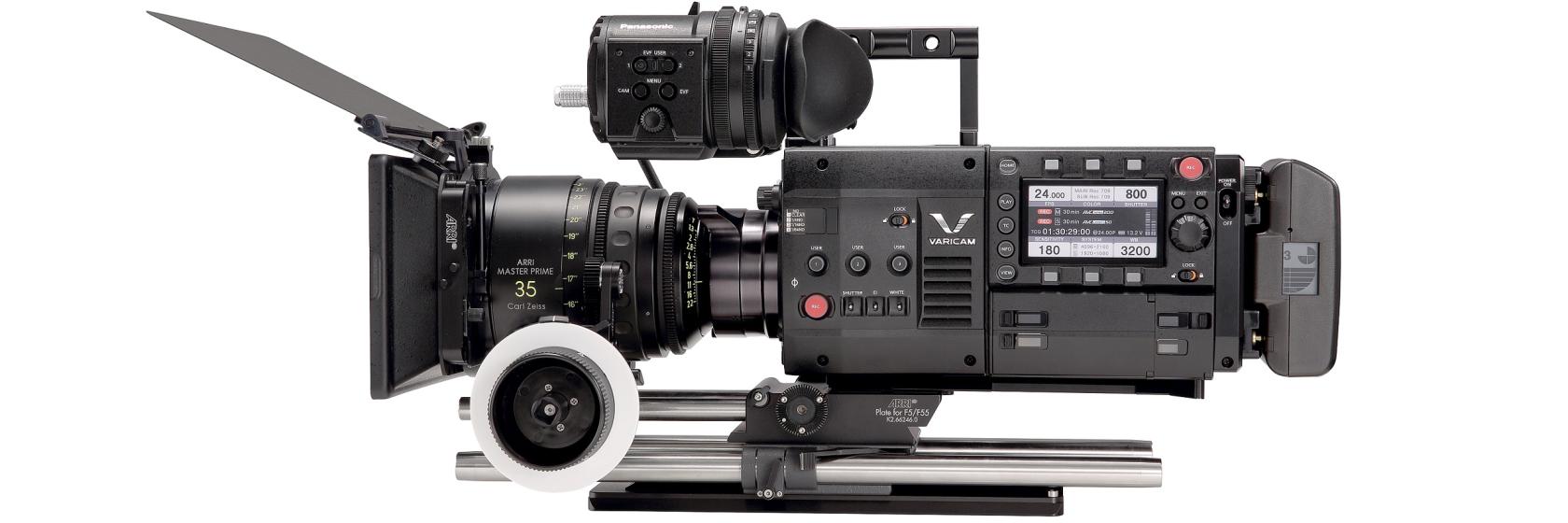Creating a portrait of teenage life
Breadcrumb
Creating a portrait of teenage life
DP Andrij Parekh shoots Netflix’s 13 Reasons Why with VariCam 35 cameras.
Challenge
How to create two looks using anamorphic 2:1 lenses and spherical lenses without the need for additional lighting.Solution
Shooting at 800 ISO during the day and 5,000 ISO at night allowed for long lens anamorphic shooting at low light."The sensitivity in the VariCam is quite remarkable. It was a very clean 5,000 ISO, unlike what you would get out of an Alexa at 5,000." DP Andrij Parekh

One of the most honest portraits of teenage life,13 Reasons Why is a Netflix series based on the 2007 young adult novel by Jay Asher and adapted by Brian Yorkey.
Set in Northern California, the 13-episode series, starring Dylan Minnette and Katherine Langford, tells the story of a high school student, Hannah Baker, who kills herself after perceived humiliationby friends and schoolmates. Two of the show's executive producers include pop starSelena Gomezand Academy Award winning writer/director Tom McCarthy (Spotlight,Win Win), who directed the first two episodes of the series.
McCarthy worked with cinematographer Andrij Parekh (Show Me a Hero,Blue Valentine) withPanasonic VariCam 35 cinema cameras. During prep, Parekh tested the VariCam 35, Alexa 65, and the Sony F55. One of the main reasons he selected the VariCam 35 was due to the camera's native 5,000 ISO setting for lowlight shooting. “The sensitivity in the VariCam is quite remarkable,” reveals Parekh. “It was a very clean 5,000 ISO, unlike what you would get out of an Alexa at 5,000.”
Parekh and McCarthy re-watched a lot of teen movies from their youth and John Hughes'The Breakfast Club(1985), Gus Van Sant'sElephant(2003) and the TV seriesMy So Called Life(1994) were big influences on the look of the series. RegardingThe Breakfast Club, Parekh liked the film's naturalistic look, as well as the subjective views for each character.
"The sensitivity in the VariCam is quite remarkable"
For13 Reasons Why, Parekh and McCarthy decided to create two different looks – one that depicts the present, or aftermath, and one that shows the past, leading up to Hannah's suicide. “The show is basically about a teen girl's suicide and shows the past and present,” explains Parekh. “I wanted to separate them visually but not make the visual differences too pronounced. It was something that I hoped the audience would feel and not be distracted by. To create these looks, we used anamorphic 2:1 lenses for the past and spherical lenses for the present.”
For the past, Parekh choseHawk V-Lite anamorphic lenses. He liked the Hawks because they were lighter than most 2:1 anamorphic lenses. “We shot a lot of handheld for the past so having a lighter lens was important to me,” explains Parekh. “I also love the focus fall off on the wider end. The Hawks have all the great characteristics of anamorphics – the center being sharp and the edges being a little softer. With the VariCam 35's native 5000 ISO, we were shooting with anamorphics (f/2.2 – 2.8) with an ND .6 or .9. For night exteriors, that was really unheard of and a first for me.”

Because the series is viewed in the 16:9 aspect ratio, Parekh had to center cut the 2.40:1 frame. “By doing this, you basically end up using a little less of the 4K digital negative,” he explains, “but what it did give us was a softer, more romantic look for the past.”
For the present, Parekh selectedLeica Summilux C-series prime lensesbecause the lenses “have a softness and roundness to them but also allowed us to light a little harder and more dramatically to counteract that softness. The Leica lenses render digital in a very pleasing way. The focus fall off is fantastic at T-1.4 and we were shooting them wide open all the time.”
Parekh captured UHD (3849 x 2160) AVC Intra 444 files to expressP2 cards. “Most of our audience are probably going to watch the show on their iPhones or iPads, or maybe a television at home. The AVC Intra codec's resolution was perfect for broadcast, and it didn't require massive data storage.”
During the shoot, Parekh used native 5,000 ISO mainly at night and was greatly impressed at the lack of noise. For day shooting, he shot at native 800 ISO. In terms of lighting, Parekh revealed that he lit with the same amount of light as with any camera but the crew didn't have to struggle when shooting on longer lenses. “With the anamorphics you're on a 2.2 on the Hawk for the 35,45,55 but then you jump to a 2.8 or 3.5 when you want to go to a 100mm or longer,” he reveals. “It allowed for more long lens anamorphic shooting at low light.”
In terms of lighting, Parekh puts all his lights through bleached or unbleached muslin. “Whether it's HMIs through muslin or Kino Flos through muslin, I always try to take the electronics out of the lighting and cameras. So, I use muslin, which is an organic cloth that counteracts that. What you end up doing is using more light because it cuts a tremendous amount, but I still like the softness the muslin gives you.”
13 Reasons Why was posted in Los Angeles atEncore Hollywoodand graded by colorist, Laura Jans Fazio. Parekh was able to help grade the first two episodes. “Laura basically helped me set up the LUTs at the beginning, and then she came in and did the DI at the end,” says Parekh.
To watch 13 Reasons Why, visit www.netflix.com. (You will need a Netflix membership to view.)
Read more insights…
article
PANASONIC UNVEILS CUTTING-EDGE REMOTE CAMERA CONTROLLER WITH MACRO FUNCTIONALITY AND DUAL JOYSTICK CONTROL
Panasonic unveils groundbreaking remote camera controller that’s set to revolutionise operator workflows, featuring Panasonic’s first-ever macro functionality, dual joystick control, and seamless peripheral integration.
article
PANASONIC REDEFINES VIDEO PRODUCTION WITH NEW 4K MULTI-PURPOSE CAMERA AND WORLD’S FIRST AUTO-FOCUS FUNCTION
Panasonic unveils the AK-UBX100 4K multi-purpose camera, featuring auto-focus functionality that delivers more flexibility and precision than ever before.
Case Study
O2 Production Relies on Panasonic KAIROS for Broadcasting Top-Tier Football and Ice Hockey in Czechia
In November 2023, O2 Production secured exclusive broadcasting rights for the Czech First League and Czech Extraliga – the country’s premier football and ice hockey leagues, respectively. With only a few weeks to prepare before the end of the year, it faced the challenge of managing up to eight simultaneous live broadcasts. To meet this demand, a cutting-edge Remote Broadcast Centre was constructed in Prague’s Brumlovka district, built entirely on the SMPTE ST 2110 IP-based protocol.
article
PANASONIC APPOINTS UNIVERSITY OF STAFFORDSHIRE AS KAIROS ACADEMY PARTNER
Staffordshire is the first UK university to become a KAIROS Academy Partner, offering students a state-of-the-art eSports degree that equips them with essential industry skills.
Sorry there was an error...
The files you selected could not be downloaded as they do not exist.
You selected items.
Continue to select additional items or download selected items together as a zip file.
You selected 1 item.
Continue to select additional items or download the selected item directly.
Share page
Share this link via:
Twitter
LinkedIn
Xing
Facebook
Or copy link: